Topics List
May 29, 2015 Updated
IKAROS enters hibernation mode for 5th time
|
JAXA has been confirming the status of the Small Solar Power Sail Demonstrator “IKAROS” by receiving data from it since April 2015, when the IKAROS woke up from its hibernation mode. We, however, could not receive radio waves from the IKAROS on May 21, thus we determined that the demonstrator had shifted to the hibernation mode
for the fifth time as we expected. |

|
|---|
Apr. 30, 2015 Updated
IKAROS wakes up from hibernation mode for the 4th time
|
The IKAROS seemed to wake up from its hibernation mode in mid March 2015, and JAXA searched for it based on its attitude and orbit prediction to receive its radio waves. On April 23 (Thu.), we successfully found the IKAROS, which is flying at a distance of about 120 million kilometers from the Earth. |
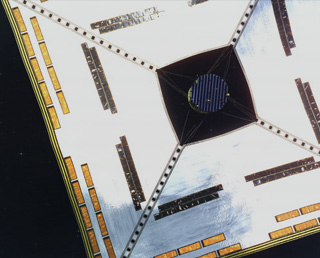
|
|---|
Jun. 4, 2014 Updated
IKAROS wakes up from hibernation mode for third time
|
The IKAROS seemed to wake up from its hibernation mode in mid April, and JAXA searched for it based on its attitude and orbit prediction to receive its radio waves. On May 22 (Thu.), we successfully found the IKAROS, which is flying at a distance of about 230 million kilometers from the Earth. We will continue to receive data from the IKAROS until mid June to confirm its condition and analyze the information. The IKAROS, launched in May 2010, completed its mission, and is now revolving around the sun about every 10 months. Power generation is insufficient for seven months out of 10 so the IKAROS goes into hibernation mode for this period by shutting down instruments. For the remaining three months, the IKAROS is awake with enough power so that we can receivedata from it. |
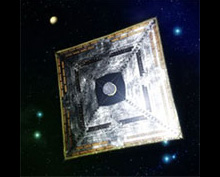
|
|---|
Nov. 30, 2012 Updated
IKAROS world record certified!
|
The Small Solar Power Sail Demonstrator “IKAROS” and its two separated cameras “DCAM1”and “DCAM2” have been recognized by GUINNESS World Record (TM). The IKAROS was awarded as the world's first solar sail spacecraft between planets, and the two separated cameras were recognized for the smallest size of a spacecraft flying between planets. Left: Osamu Mori, IKAROS Demonstration Team chief |
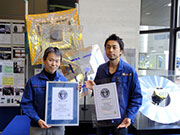
|
|---|
Sep. 11, 2012 Updated
IKAROS to wake up from hibernation
|
The IKAROS was confirmed to have shifted itself into hibernation mode (or shutting down its onboard equipment due to low power generation) sometime before Jan. 6, 2012. |
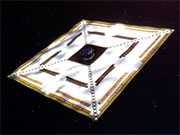 |
|---|
Jan. 6, 2012 Updated
IKAROS: Details of reverse spin operation result and hibernation mode
|
The IKAROS project team carried out the reverse spin operation of the IKAROS on Oct. 18, 2011, and acquired detailed achievements about the operation. |
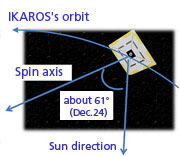 |
|---|
Oct. 18, 2011 Updated
Result of IKAROS 'reverse spin operation'
|
On Oct. 18, 2011 (Japan Standard Time), JAXA performed a "reverse spin operation" of the IKAROS. As a result of the jet thrust to shift IKAROS's spin direction to the reverse way for about 20 minutes from 7:20 a.m. on the 18th, the membrane successfully spun in the reverse course without being entangled. The IKAROS is in good shape after reversing its spin, and its spin rate at the time of completing this operation was -0.24rpm. |
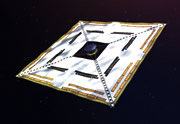 |
|---|
Jan. 26, 2011 Updated
IKAROS regular operations completed
|
The Small Solar Power Sail Demonstrator “IKAROS” has been in its regular operation phase for about six months to verify navigation by the world’s first solar sail device and power generation by the thin-film solar battery. As its missions have been achieved, the IKAROS has completed its regular operations. The demonstrator will be in the post operational phase, which leads to the development of a successor while acquiring basic knowledge of solar power sail technology including a navigation guidance technique. |
 |
|---|
Jul. 23, 2010 Updated
IKAROS successfully controlled its attitude using liquid crystal device
|
The Small Solar Power Sail Demonstrator "IKAROS" performed an attitude control experiment of the solar sail using an attitude control device, or the liquid crystal device, on July 13, and JAXA confirmed that the attitude control performance was successfully accomplished as planned. |
 |
|---|
Jul. 14, 2010 Updated
IKAROS observes gamma-ray burst
|
The GPA, or the gamma-ray polarized light detector, which is aboard the Small Solar Power Sail Demonstrator "IKAROS," successfully observed a gamma-ray burst. JAXA will further aim at observing gamma-rays through polarized light observations, which will be a global first if successful. Polarized light observations of gamma-rays will contribute to elucidate the magnetic structure and the radiation system of a gamma-ray burst, thus it is expected to be greatly helpful to solve the mystery of the death of planets and the birth of black holes. |
 |
|---|
Jul. 9, 2010 Updated
IKAROS: Acceleration by solar sail confirmed
|
The small solar power sail demonstrator "IKAROS," which successfully deployed its solar sail, was confirmed to accelerate by solar sail receiving solar pressure. |
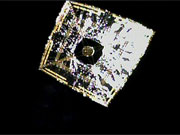 |
|---|
Jun. 30, 2010 Updated
IKAROS moving to regular operations
|
The Small Solar Power Sail Demonstrator "IKAROS," which successfully deployed the solar power sail, completed its initial operation verification of the necessary mission equipment including power generation of the thin film solar cells. |
 |
|---|
Jun. 28, 2010 Updated
IKAROS successfully shot images also by DCAM1
|
The IKAROS, which deployed the solar sail, took its image by the second separation camera (DCAM1) on June 19 after its successful photo shooting by DCAM2 (the first separation camera.) |
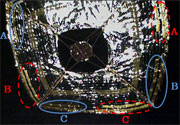 |
|---|
Jun. 21, 2010 Updated
Photo shooting by IKAROS separation camera 1 going smoothly
|
To improve its steering performance, the IKAROS has gradually reduced its rotation speed since June 16, and on the 19th, it released the separation camera 1 (DCAM1) to carry out a photo shooting experiment. The images taken by the DCAM1 are currently being transmitted through downlink, and we were able to confirm a shadow of the camera in the very first image shot by the DCAM1. |
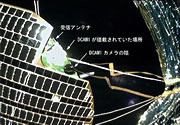 |
|---|
Jun. 16, 2010 Updated
Successful image shooting of solar sail by IKAROS separation camera
|
The small solar power sail demonstrator "IKAROS," which expanded its solar sail on June 10, released its separation camera and took images of the deployed solar sail successfully. |
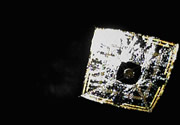 |
|---|
Jun. 11, 2010 Updated
IKAROS successfully deploys sail!
|
The Small Solar Power Sail Demonstrator “IKAROS” launched by the H-IIA F17 began to deploy its sail on June 3 (Japan Standard Time, JST,) and on June 10 (JST,) JAXA confirmed the proper extension of the sail and power generation by the thin film solar cells at about 7.7 million km from the Earth. |
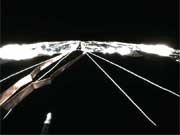 |
|---|
May 22, 2010 Updated
IKAROS checking its conditions
|
The signal from the Small Solar Power Sail Demonstrator “IKAROS,” which was launched by H-IIA F17 on May 21 (Japan Standard Time, JST), was acquired at the Usuda Deep Space Station and confirmed its solar power generation and stable posture, and established communications. |
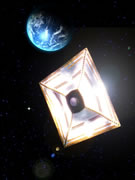 |
|---|
May 21, 2010 Updated
AKATSUKI, IKAROS successfully launched!!
|
The H-IIA Launch Vehicle No. 17 (H-IIA F17) with the Venus Climate Orbiter "AKATSUKI" onboard was launched at 6:58:22 a.m. on May 21 (Japan Standard Time) from the Tanegashima Space Center. The H-IIA F17 flew smoothly, and, at 27 minutes and 29 seconds after liftoff, the AKATSUKI was separated from the H-IIA. |
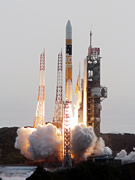 |
|---|
May 18, 2010 Updated
AKATSUKI/IKAROS Launch rescheduled to 6:58 a.m. on the 21st (Fri)
|
The launch of the Venus Climate Orbiter "AKATSUKI" and the Small Solar Power Demonstrator "IKAROS" by the H-IIA Launch Vehicle No. 17 was rescheduled at 6:58:22 a.m. on May 21 (Fri. Japan Standard Time, JST) after carefully studying the weather conditions. |
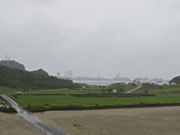 |
|---|
May 10, 2010 Updated
AKATSUKI and IKAROS moved to VAB
|
On May 9, the encapsulated Venus Climate Orbiter "AKATSUKI" and the Small Solar Power Sail Demonstrator "IKAROS" were transported to the Vehicle Assembly Building (VAB), where the H-IIA Launch Vehicle No. 17 was waiting for their payloads. They will be loaded onto the launch vehicle, and the final inspection will be carried out to be ready for the launch on the 18th. |
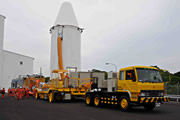 |
|---|
May 6, 2010 Updated
AKATSUKI and IKAROS encapsulated in the fairing
|
On May 4, the Venus Climate Orbiter "AKATSUKI" and the Small Solar Power Sail Demonstrator "IKAROS" were encapsulated in the fairing at the Spacecraft and Fairing Assembly Building (SFA) at the Tanegashima Space Center (TNSC.) The fairing covers the payloads to protect them from air resistance, friction heat, and acoustic vibrations during launch. |
 |
|---|
Mar. 12, 2010 Updated
AKATSUKI and IKAROS open to the media at Sagamihara Campus
|
On March 12, the Venus Climate Orbiter "AKATSUKI" and the Small Solar Power Sail Demonstrator "IKAROS" were displayed to the media at the Sagamihara Campus. |
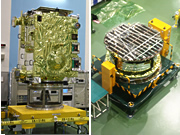 |
|---|
Mar. 11, 2010 Updated
Solar Sail IKAROS x LightSail Message Campaign Extended until March 22 (Vernal Equinox Day)
|
The collaborative message campaign held for JAXA's "IKAROS" satellites and The Planetary Society's "LightSail-1" mission has been extended until March 22, (Monday and a holiday in Japan for Vernal Equinox Day.) |
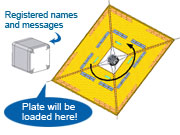 |
|---|
Mar. 3, 2010 Updated
"IKAROS" launch date set! "AKATSUKI" Special site open
|
The launch time and day of the H-IIA Launch Vehicle No. 17 (H-IIA F17) has been set for 6:44:14 a.m. on May 18. The H-IIA will carry the Venus Climate Orbiter "AKATSUKI," the Small Solar Power Sail Demonstrator "IKAROS," and four other small satellites to space. |
 |
|---|
Dec. 4, 2009 Updated
Solar sail "IKAROS x LightSail" Support Campaign
Let's set sail for the solar system by a solar yacht!
|
A yacht travels through the ocean using wind pressure. Thus, theoretically, solar sails should move their way through space by receiving pressure from solar lights. JAXA and the Planetary Society of the U.S. will launch "IKAROS (Interplanetary Kite-craft Accelerated by Radiation Of the Sun)" and "LightSail-1" respectively in Japan Fiscal Year 2010 to carry out verification tests on this technology. Taking this opportunity, the two organizations would like to hold a message campaign together to ask your support for the two missions. |
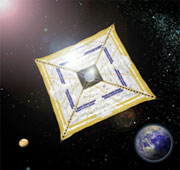 |
|---|